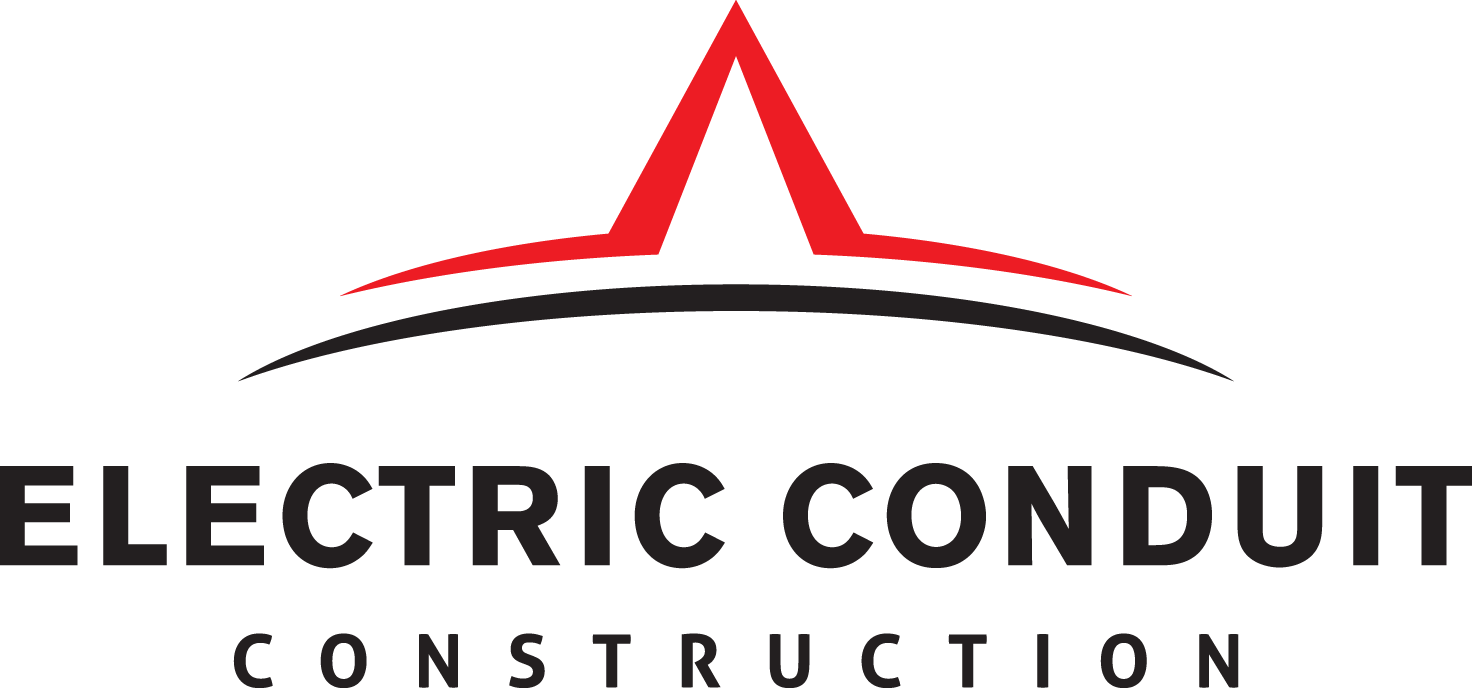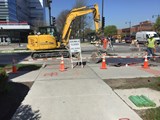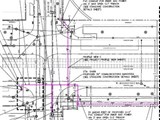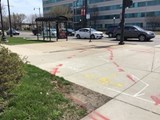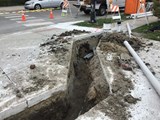Building Small Cell Sites - Urban Areas
The move to 5G's higher operating frequencies will demand smaller but more numerous antennas to accommodate the anticipated increase in connection density of the Internet of Things and machine to machine communications. Turning design into reality is the job of the construction professionals at Electric Conduit Construction (ECC). Small projects like the one described here have an additive effect. When a number of these small cell sites are knitted together with fiber optic cable the network is enhanced, latency diminishes, data flow is faster and the perception of the customer is improvement in service.
What does it take to bring this design into reality? Good engineering makes a difference in the efficiency of construction. Firms like HBK engineering and Tallman Associates have experience in the City of Chicago. They keep accurate catalogs of utility placement and use this in their designs. They understand what the city requires and they design to their standards. In every area of the country there are engineering firms that know the local landscape and can supply a properly engineered design that can usually be built with few field modifications. A competent engineering firm will also provide support if field conditions are not as predicted.
Permit acquisition is important to running a smooth project. ECC devotes much time and expertise to the permit acquisition process. Cities, Municipalities, Counties, Federal and State can all be involved in permits. Typically traffic control and underground work make up the bulk of permits. But many times water discharge, wetland work, streams and river work will involve the U.S. Army Corp. of Engineers and various State and Federal environmental agencies. ECC takes a proactive role in permit acquisition because it is very expensive to mobilize a crew to a job site and then have them idled by lack of a permit.
Utility damage prevention is vital to worker and public safety. Underground utility work is inherently dangerous. The saying, "out of sight, out of mind" is dangerous for underground utility workers. Numerous utilities occupy cramped corridors in cities. One mistake and a gas line or high voltage power line can be penetrated with disastrous results. Preventing damage is up to the contractor. A contractor with a healthy dose of skepticism is likely to be a safer bet for the utility company.
For ECC damage prevention starts with a review of the drawings and then laying out the job with white lines. After this locates are called and all utilities involved mark out their lines. Then a second visit to the job site to make sure that the locate marks agree with the neighborhood. For example if there are 12 businesses and homes but only 10 gas services marked there is a discrepancy that must be resolved.
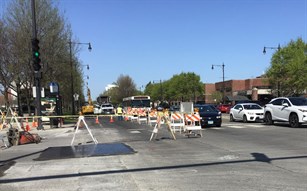
View of the work zone (1)
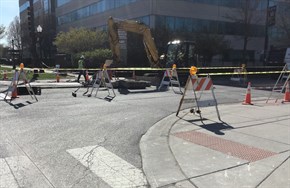
View of the work zone (2)
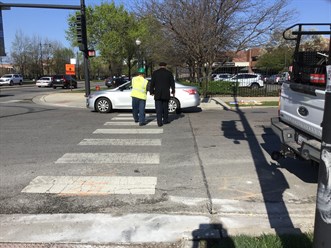
Flaggers lending assistance to keep pedestrians clear of the work zone (1)
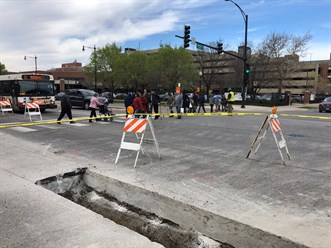
Flaggers lending assistance to keep pedestrians clear of the work zone (2)
Developing a proper job site analysis also requires a critical look at the area. Is it residential or business? High pedestrian area or low? Major institutions nearby? Public transit access point? All of this information can be used to make the foreman's life easier and make the job site safe for pedestrians and motorists. One of the major sources of injury for workers and pedestrians is work zone violations. Once inside a work zone the environment changes from smooth roads and sidewalks to construction rubble, ditches, open excavations, moving equipment and high energy tools. For a pedestrian texting while walking, this environment could be a life changing event.
With a project plan developed, a job site safety analysis done, permits in hand and locates verified we can begin our project, which consists of:
- 512' of open cut trench with 4" conduits
- 602' of horizontal directional drill
- 3 - 30" man holes excavated and placed
- 3 cores on those manholes
- 1 tie-in to an existing manhole
- 1 quazite box
- 1 street pole removal
- 1 enlarged street pole foundation
- 1 new street light pole placed
Estimated time for this project is one month. Special considerations include a public transit stop, and Orthopedic Treatment Center, and a Center for the visually impaired.
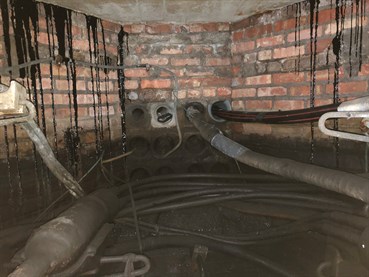
Tie in to existing man hole
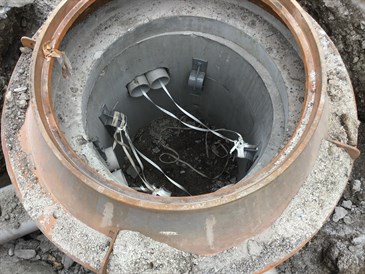
Man hole with conduit and mule tape place. Ready to pull in fiber.
As this project unfolded it was clear that the pedestrian traffic from the medical center and the center for the visually impaired was higher than anticipated. In response ECC put on extra flaggers and laborers as escorts for anyone crossing the intersection. The enhanced visibility of our escorts in their reflective vests provided extra warning to motorists. There were no incidents with pedestrians during the life of this job. All manhole excavations were covered with road plates at days end. While this job posed some challenges with pedestrians the overall work went as planned. Ultimately this new light pole will carry a small cell and radio package and will become a part of the current 4G LTE and soon to be 5G cellular network.
We thank the motorists who drove carefully around our workzone and all of the pedestrians that tolerated the disruption of their normal walking paths for one month. A big thanks goes to our vigilant foreman and his crew for keeping an eye on their own safety as well as the safety of every pedestrian crossing this busy intersection - Truly a job well done.
